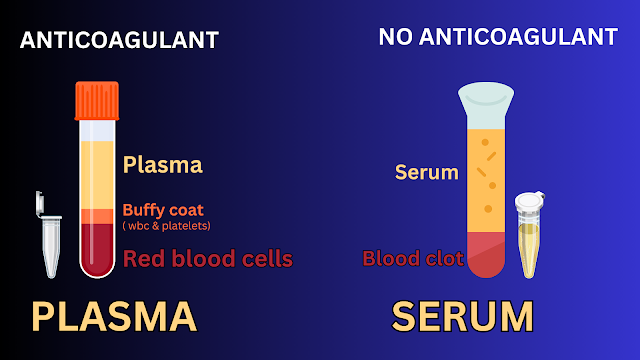How to Separation of Serum and Plasma? Questions about separating serum and plasma?
It is obtained by removing all formed elements from the anti-coagulated blood centrifuge at 2200-2500 RPM for 15 minutes or 5000 RPM for 3-5 minutes. This is required for the coagulation profile, Fibrinogen assay, etc.
- Draw 5 mL of whole blood for serum needed.
- Centrifuge for at least 15 minutes at 2200-2500 RPM or 5000 RPM for 3 – 5 minutes.
- Pipette the serum into a clean plastic screw-cap vial and attach the label.
Questions and Answers about separating serum and plasma:
General:
- What is the difference between serum and plasma?
- Why is it necessary to separate serum and plasma?
- What are the different methods for separating serum and plasma?
- What are the pros (advantages) and cons (disadvantages) of each method?
- What factors can affect the quality of separated serum and plasma?
Specific methods:
- What type of centrifuge is best for separating serum and plasma?
- What is the optimal centrifugation speed and time?
- How can I avoid contamination during centrifugation?
- Clot activator:
- What types of clot activators are available?
- What is the optimal amount of clot activator to use?
- How can I ensure complete clot formation?
- Gel separator tubes:
- What are the different types of gel separator tubes available?
- How do gel separator tubes work?
- What are the advantages and disadvantages of using gel separator tubes?
Additional questions:
- How can I ensure the sterility of separated serum and plasma?
- How should I store separated serum and plasma?
- How long can separated serum and plasma be stored?
- How can I dispose of biohazardous waste properly?
Troubleshooting:
- What can I do if I am unable to separate serum and plasma?
- What does it mean if my serum is cloudy or discolored?
- How can I avoid hemolysis during sample collection and processing?
- This list is not exhaustive, and you may have additional questions specific to your situation.










No comments